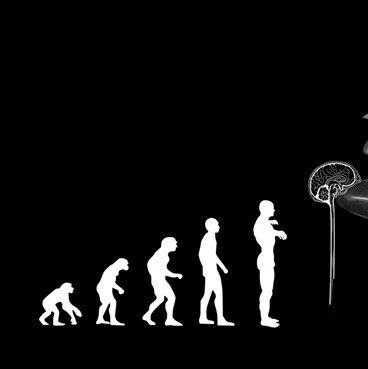据10月20日刊《美国医学会杂志》上的一项研究披露,与那些接受行为测试听力筛检的婴儿相比,那些接受过新生儿听力筛检的罹患永久性听力损害的孩子在其3-5岁时期的总体及语言发育结果及生活品质会比较好。
永久性的孩提时听力损害是一种严重而且相对常见的疾病。根据文章的背景资料,听觉输入对发育及社交功能都是必不可少的,所以早期了解一个孩子的听觉能力对在必要时创造早期听觉放大机会来说是很重要的。文章的作者写道:“直到几年前,人们在孩子9个月大的时候用分心听力筛检(行为测试)法来进行听力筛检。新生儿听力筛检(在出生2周内进行)已被引进到许多的发达国家之中,因为人们认为,诊断孩提时永久性听力损害的时间越早,孩子在发育上的劣势也越小。然而,到目前为止还不存在需要普遍开展新生儿听力筛检的强有力的证据。”
荷兰莱顿的莱顿大学医学中心的Anna M. H. Korver, M.D., Ph.D.及其同事对在3-5岁时接受分心听力筛检的罹患永久性孩提时听力损害的孩子的发育结果与接受新生儿听力筛检的孩子的发育结果之间的关联性进行了研究。在该研究期间,在某个提供新生儿听力筛检测试的地区有33万5560位孩子出生,而在某个提供分心听力筛检测试的地区则有23万4826位孩子出生。在跟踪随访时,在提供新生儿听力筛检测试地区中有263个孩子被诊断患有永久性孩提时期的听力损害(相当于每1000个孩子中有0.78人),在提供分心听力筛检测试地区则有171个孩子被诊断患有永久性孩提时期的听力损害(相当于每1000个孩子中有0.73人)。
有301个孩子(占69.4%)参加了一般性表现测试分析。在这一分析中,这2组人(新生儿听力筛检组, n=183; 分心听力筛检组,n=118)在听力损害程度和教育类型上都差不多。广泛性发育结果的分析包括了80名出生在接受新生儿听力筛检测试地区的孩子及70名出生在接受分心听力筛检测试地区的孩子。该分析显示,总体来说,与那些出生在分心听力筛检测试地区的孩子相比,那些出生在接受新生儿听力筛检地区的孩子的发育后果的评分较高,其中包括社交能力发育、总体运动发育和生活品质的测试评分。
文章的作者写道:“本研究的结果为假设的普遍实行新生儿听力筛检测试计划的重要性和有效性增添了证据。因为这项研究是在连续三年中,在所有出生在荷兰的孩子中所开展的全国范围内的研究,因此我们认为,我们的结果对其它提供普遍性听力筛检计划的国家也具有普遍性,但在其它国家中开展新生儿听力筛检计划的可行性和有效性仍有待研究。”
推荐英文摘要:
JAMA. 2010;304(15):1701-1708. doi:10.1001/jama.2010.1501
Newborn Hearing Screening vs Later Hearing Screening and Developmental Outcomes in Children With Permanent Childhood Hearing Impairment
Anna M. H. Korver, MD, PhD; Saskia Konings, MD; Friedo W. Dekker, PhD; Mieke Beers, PhD; Capi C. Wever, MD, PhD; Johan H. M. Frijns, MD, PhD; Anne M. Oudesluys-Murphy, MB, PhD; for the DECIBEL Collaborative Study Group
Context Newborn hearing screening programs have been implemented in many countries because it was thought that the earlier permanent childhood hearing impairment is detected, the less developmentally disadvantaged children would become. To date, however, no strong evidence exists for universal introduction of newborn hearing screening.
Objective To study the effect of newborn hearing screening vs distraction hearing screening, conducted at 9 months of age, on development, spoken communication, and quality of life.
Design, Setting, and Participants Between 2002 and 2006, all 65 regions in the Netherlands replaced distraction hearing screening with newborn hearing screening. Consequently, the type of hearing screening offered was based on availability at the place and date of birth and was independent of developmental prognoses of individual children. All children born in the Netherlands between 2003 and 2005 were included. At the age of 3 to 5 years, all children with permanent childhood hearing impairment were identified. Evaluation ended December 2009.
Main Outcome Measures Performance (education and spoken and signed communication), development (general and language), and quality of life.
Results During the study period, 335 560 children were born in a newborn hearing screening region and 234 826 children in a distraction hearing screening region. At follow-up, 263 children in newborn hearing screening regions (0.78 per 1000 children) and 171 children in distraction hearing screening regions (0.73 per 1000 children) had been diagnosed with permanent childhood hearing impairment. Three hundred one children (69.4%) participated in analysis of general performance measures. There was no difference between groups in the primary mode of communication or type of education. Analysis of extensive developmental outcomes included 80 children born in newborn hearing screening regions and 70 in distraction hearing screening regions. Multivariate analysis of variance showed that overall, children in newborn hearing screening regions had higher developmental outcome scores compared with children in distraction hearing screening regions (Wilks = 0.79; F12 = 2.705; P = .003). For social development, the mean between-group difference in quotient points was 8.8 (95% CI, 0.8 to 16.7) and for gross motor development, 9.1 (95% CI, 1.1 to 17.1). For quality of life, the mean between-group difference was 5.3 (95% CI, 1.7 to 8.9), also in favor of children in newborn hearing screening regions.
Conclusion Compared with distraction hearing screening, a newborn hearing screening program was associated with better developmental outcomes at age 3 to 5 years among children with permanent childhood hearing impairment.







